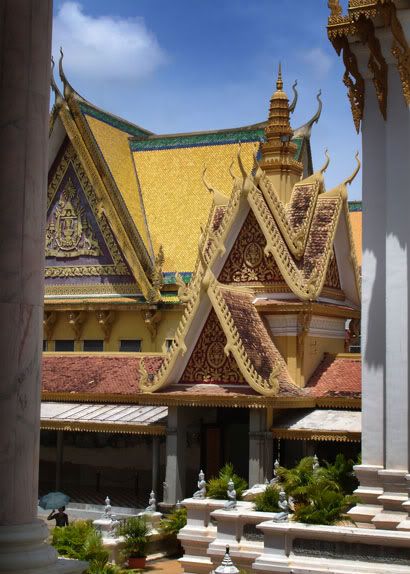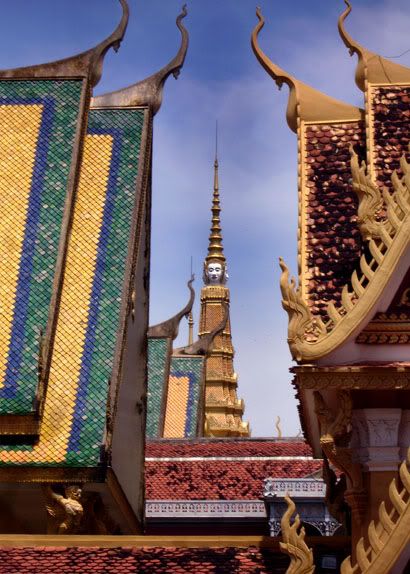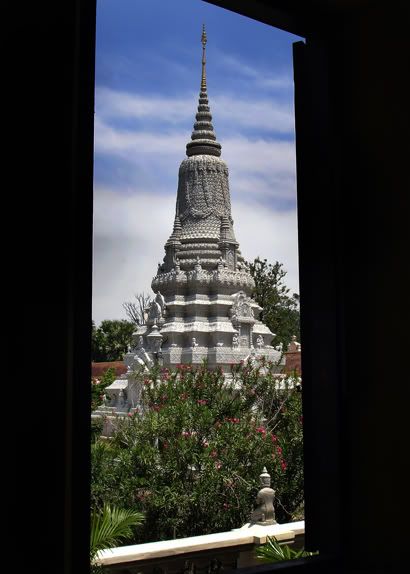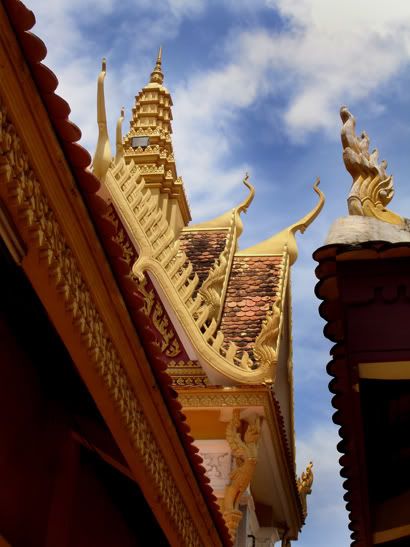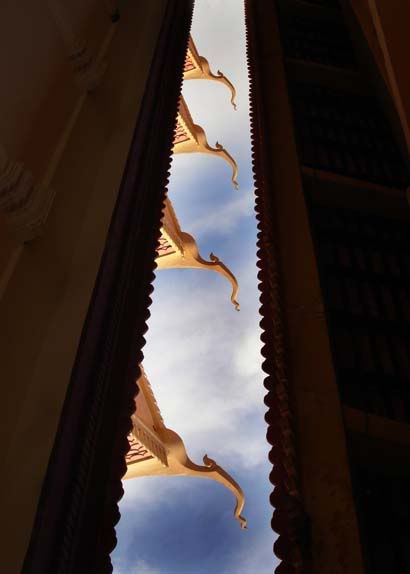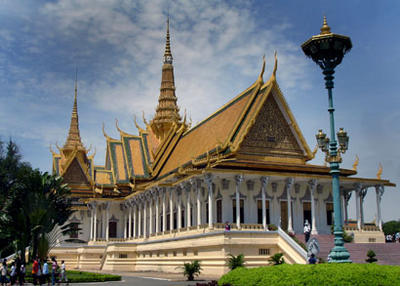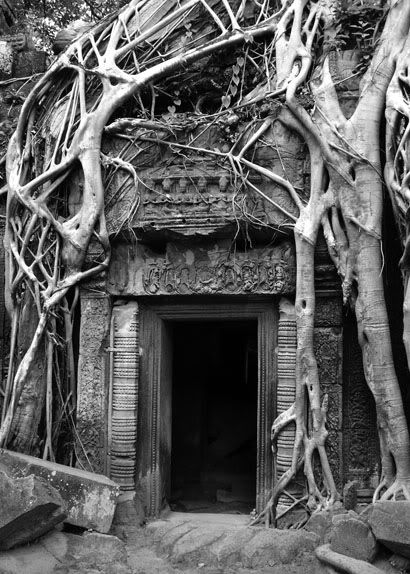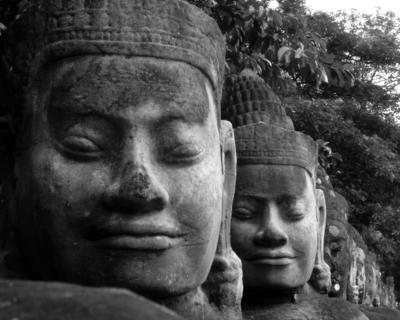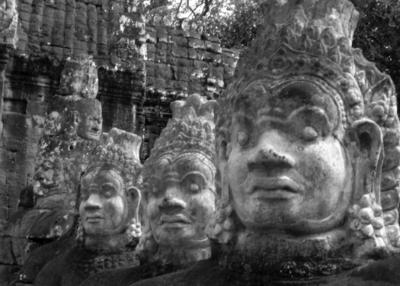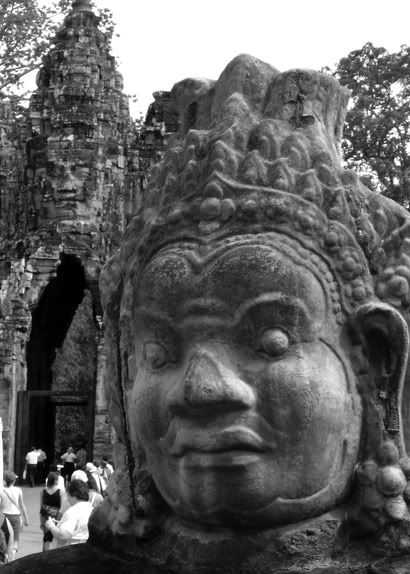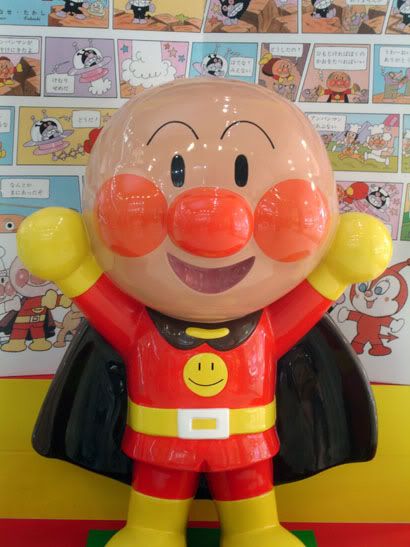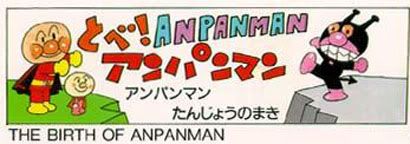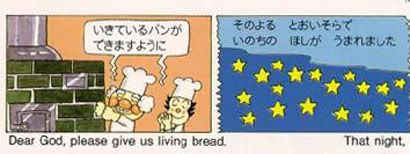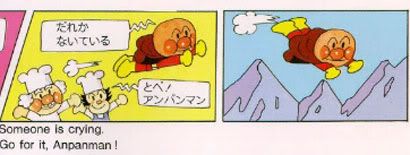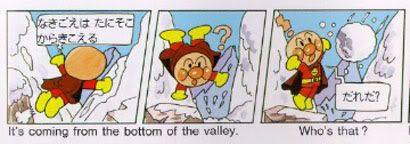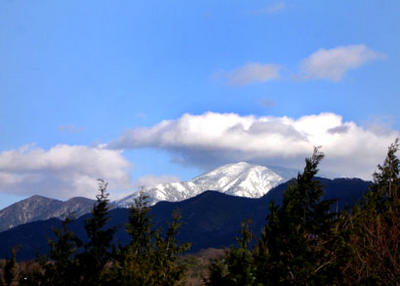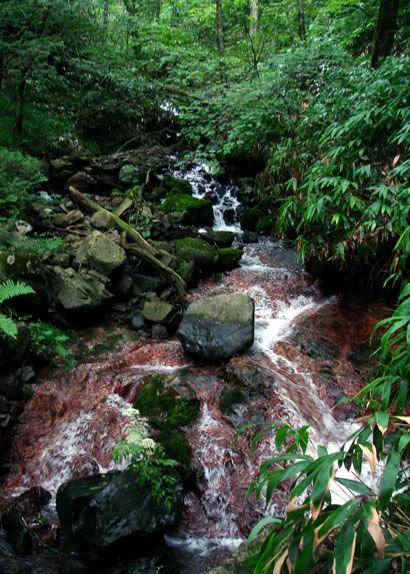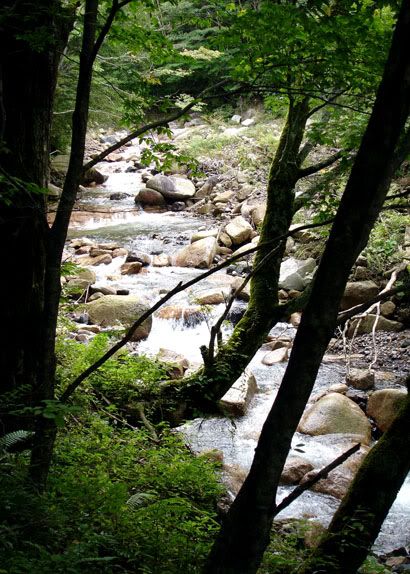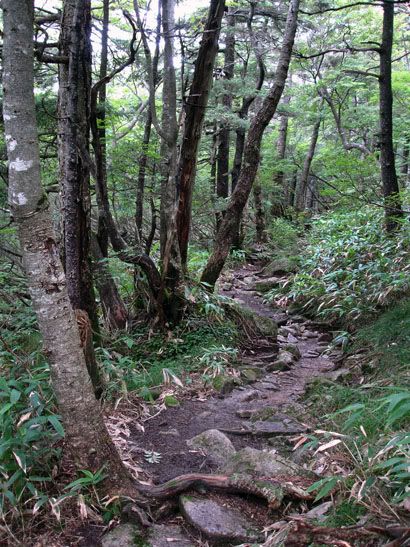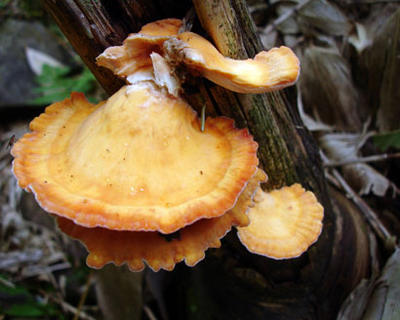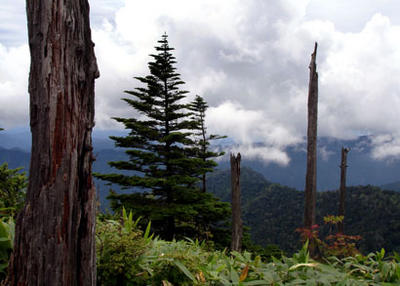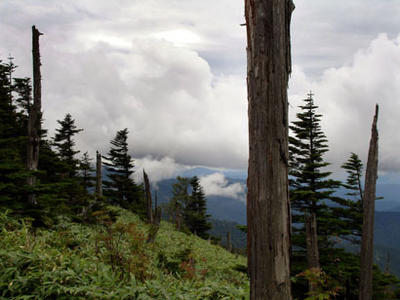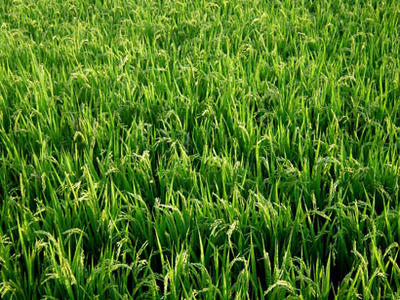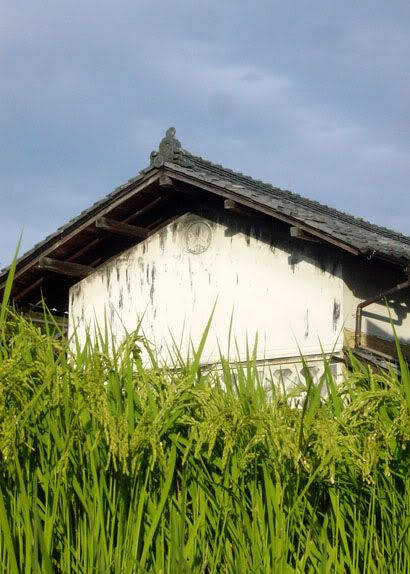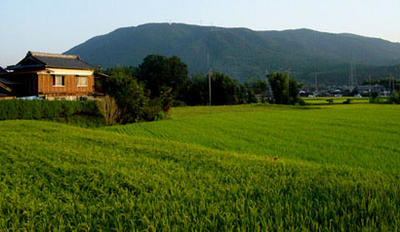
My last night in Phnom Pen seemed it would end all too soon after leaving a popular local night club called Spark. I sat, side-saddled, on the back of my friend's motorbike, as we toured the quiet city's mostly empty streets. By the bright lights that illuminated the Royal Palace, I was amazed at the amount of people still awake. Children ran and played as women sold brightly colored fruits and vegetables, while young people hung out. Couples lined the bank of the Mekong River along the Sisowath Quay, and the sidewalks were crowded with the tuk-tuks and motorbikes that had flooded the streets during the day, their drivers curled up beneath their tuk-tuk canopies or balanced along the seat of their bikes, feet crossed, up on the handle bars, catching a few winks before their work began again.
In front of a temple gate I noticed many large groups of people gathering. Young girls were selling plates of brightly colored sweets on mounds of tiny rice balls, decorated with white blossoms and a long stick, planted deeply in the sticky rice, from which hung a paper ornament in the ghostly shape of a person. Curiosity peaked, I asked my friend to stop, and as we slowed down across the street from the temple, the girls ran to us, eager to make a sale. Glancing over their heads I saw enormous crowd filling the street, headed towards the temple, bathed in the unnatural glow of a streetlight. My friend explained that these people had come to celebrate Pchum Ben, the festival of hungry ghosts.
I bought a thin, aluminum platter stacked with small rice balls, flower shaped sweets and two lilies and walked into the temple grounds to sit outside the doors with many of the people hoping to get a good seat for the service. From the moment I passed through the gate I felt and met the eyes of all the people gathered turn towards me in shock and amazement. For the first time in my life I felt out of place, as if my presence was completely unexplainable. Since I knew neither the language nor the custom of the people who wondered at me, I could not help but lower my eyes and stay close to my friend.
A small crew of children followed me to where I sat down, and then stood before me, tilting their heads this way and that, trying to figure me out. Finally they began to smile and giggle before working up the courage to use what little English they knew to introduce themselves: "My name Ran," smiled a small boy, pointing to himself. "My name Dalin," he said, pointing to another. We giggled together, struggling to make sense of one another, until the creaking sound of the great wooden doors of the temple slowly swinging open cut through our laughter and drew my attention to the temple, which seemed to gasp for air as 3 young monks in saffron colored robes subdued in tone by the cover of night struggled to pull them open for the visitors.
We joined the crowd, followed by the children, who's hands I found laid upon my feet as we reached the door, fighting over which of them would watch over them, hoping, as my friend later told me, that they might earn some money in doing so. They did not pass through the doors, but sat, squatting at the threshold, arranging the growing jumble of empty shoes into rows and columns. After checking my shoes at the door, I half expected to feel the smooth, cool, woven texture of tatami beneath my feet as we entered the temple, but instead I turned to see the entire room covered in bright red carpet. At the front of the hall was a large golden buddah, framed by four golden columns, connected by strands of Christmas lights. Behind the buddah's head was a psychedelic, swirling, neon-colored something that looked like it belonged beneath a black light. When I mentioned the difference between this buddah and the ones I had seen in Japan, my friend proudly replied "Ah, yes. We use technology!"
On the far left hand side of the room, the monks began to trickle in, taking their place in neatly arranged lines on the floor, facing the growing audience. They seemed to be shaking off the sleep still thick in their eyes, as I began to feel mine grow heavy. By this time people had packed the temple tight, and were standing along the walls and crowded outside the open door, filling the courtyard. A monk began to chant. It was 4 Am.
The beat of the drum led them in their song, so calming I nearly fell asleep on the shoulder of my friend, until the women behind me pulled one of my toes and explained to us both, in Khmer, how improper it was since he was a boy. I was horribly ashamed, and fought with all my might to sit straight up with my palms pressed together, making my own prayers as the monks led the congregation in reciting theirs. When the chanting finished I opened my eyes to see the monks shifting themselves to face a new direction before starting all over again. If I had not been struggling to keep myself from falling asleep and further disgracing myself, I would have paid much closer attention, but all I remember is struggling to get back up to my feet as people around me picked up their plates of food, many with sticks of incense or candles burning on them, and flowed around me towards the door.
Framed by the open doors I could see the courtyard full with people, their faces dimly lit by the candles of their offerings, as they began to make three loops around the temple, crammed with hundreds of other devotees. The small children that had promised to keep watch of our shoes appeared at my feet, arranging my shoes for me to slip easily into as I joined in journey through the grounds, surrounded by the melting candles, sweet scent of incense and haunting paper spirits, which floated in the gentle wind of the bustling crowd. Each time we reached one of the 8 compass points, the people joyfully threw bay ben, a mixture of sticky rice, black beans, sesame and coconut milk, as an offering to the hungry ghosts of their ancestors, believed to return to earth during these 15 days, during which time their prodigy can ease their suffering.
With over 50% of the population under the age of 20, it is no doubt that this festival carries the weight of remembering all those who died under the genocidal reign of terror imposed by the Khmer Rouge, which killed more than 2 million people, about a third of Cambodia's population at that time, between 1974-79.
I could not stay to make the 3 circumnavigations of the temple before the sunrise called the spirits back to the other world, for soon it would call me away as well, down the Mekong River to the last stop on my journey: Viet Nam.

